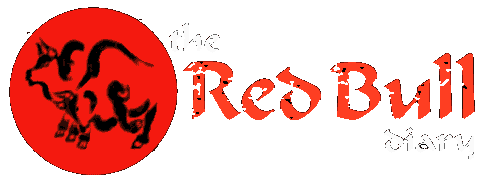Jonestown (Part 1, 1952 - 1964)
Jonestown is the name given to an agricultural community that had been set up in Guyana in 1974 by members of the Peoples Temple, a religious group under the direction of the charismatic James Warren Jones (1931 - 1978). The focus of this piece is twofold: first, to examine the powerful synthesis of political and religious ideas Jones taught, and second, to come to some understanding of the events that led to the tragedy of November 18, 1978. In the chilling words scrawled on a sign that greeted those who arrived at Jonestown to see over 900 bodies lying in the dust, "Those who fail to learn from history are condemned to repeat it."
Jim Jones was born during the Great Depression, the son of James Thurman Jones, a disabled veteran and a suspected member Ku Klux Klan. He attended Pentecostal services as a boy, and his mother's strong beliefs in social justice shaped his convictions (source). He became heavily influenced by the Social Gospel movement of the late 19th and early 20th centuries, a reaction to the period of rapid urbanization that resulted from the Industrial Revolution. Sometimes called "Christian socialism," the movement focused on realizing Christian ideals through political action to protect the poor and promote equality. One of the most influential works of the movement, In His Steps, by Charles M. Sheldon, proposed that we could transform American society by asking ourselves the simple question, "What would Jesus do?"
Jones became a student at a Methodist seminary in 1952, but quit because African Americans were not allowed to participate. At a Pentecostal convention, a female minister singled Jones out, declaring him a prophet who would travel the world. Jones began running revivalist tent shows in Indiana, and with the help of accomplices, faked healings. His reasoning behind this was that when people observed a healing, it increased their faith so that real healings could be performed. Plus, he learned from the example of other revivalist groups that faith-healings generated money. In this way, Jim Jones slowly began to amass the resources he needed to spread his particular brand of Christian socialism.
He gathered a small, predominantly black following, and founded an integrated church he called Community Unity. In 1955, he was able to purchase a building, and incorporated another small church called the Wings of Deliverance. Later that year, he changed the name to the Peoples Temple Full Gospel Church. During this time, Jones was active in community service programs, and in 1961, he was appointed director of the Indianapolis human rights commission. In that position, Jones actively integrated restaurants, churches, the telephone company, and the police department (source). However, this also made him a target. By the end of that year, attacks had been made on Jones and his family, including dynamite being placed in the automatic coal feeder of the furnace of his house, and swastikas being painted on the church doors. Jones resigned his post in late 1961 after being hospitalized with an ulcer.
Shortly following his resignation, Jones took a sabbatical to Hawaii and stayed a few months. It seems that he was already planning to create a commune that would survive the inevitable nuclear holocaust and be able to establish a new world order founded on socialist principles. Then, in January, 1962, Esquire magazine ran an article citing nine places in the world that would be safe in the event of a nuclear holocaust. The so-called "Nine Places to Hide" were (I list them here as I consider them a historical, if tangential curiosity):
- The central valley of Chile
- Guadalajara, Mexico
- Mendoza, Argentina
- Christchurch, New Zealand
- Melbourne, Australia
- Malagasy Republic
- Redwood Valley, California
- Belo Horizonte, Brazil
- Cork, Ireland
John Judge points out that at the same time, Dan Mitrione, a childhood friend of Jones' who worked closely with the CIA, was in Brazil at the same time. It is uncertain exactly what took place in Brazil in 1962, but it seems oddly coincidental that Belo Horizonte was the location of the CIA headquarters in Brazil, and that upon returning from his trip, Jones seemed to have a new influx of money. One interview, published in the San Jose Mercury News in 1978, quotes a neighbor:
We may never know for sure what transpired in Brazil, but Jones returned to Indiana with a renewed sense of purpose and an even more fervent message. The imminence of Judgment Day became a central theme in his sermons, and Jones claimed that "Divine Socialism" would use nuclear holocaust as its instrument to destroy the present social order so that the chosen could establish a utopian society. John R. Hall describes the period following Jones' return this way:A retired Brazilian engineer, Sebastiaco Carlos Rocha, who lived next door, said the Jones family "enjoyed a very expensive lifestyle."
... "He was not a very communicative person and he seemed to have very few friends in Belo Horizonte. Except for his mysterious trips with the suitcase, he spent most of his time with his family at home.
"When he did talk, he would ramble from one subject to the next and did not seem to make much sense. At these times he seemed somewhat mentally unbalanced.
"Mr. Jones seemed to enjoy talking about war in general. He also displayed great preoccupation with the world's social problems and said he hated hearing anything bad about blacks and or people in general."
Rocha's teen-age daughter, Maria, said Jones' wife gave a different reason for their visit to Brazil.
"She said they were here because she suffered from a lung ailment and doctors had told them that the climate here would be good for her," Maria said.
Rocha said "some people here believed he was an agent for the American CIA. I never saw him drink or smoke. He said he received a monthly payment from the U.S. government for his military service but he did not say how much."
...Other neighbors, who asked not to be identified, said Jones would turn aside questions about his plans in Brazil, but they said his daughter Susan told them her father intended to establish a branch of his Peoples Temple in Brazil.
Consistently, Jim Jones had taken ethically uncompromising and "impolitic" position in the existential crises of racism that arose in his path. ... By falling in with Jones, the people who joined Peoples Temple in the Indianapolis days joined the prophet's cadre in confronting the compelling dilemmas of capitalist society in the modern era: race, class privelege, and the threat of nuclear annihilation. In essence, they underwent metanoia, a radical break with their previous worldviews. Collectively, they became people of the Apocalypse who acted as if the world was coursing on the brink of disaster. They did not thereby become holy persons, cleansed of the ways of sin themselves, but whatever else they did, they lived in opposition to what they perceived as the direction of world history. (Gone from the Promised Land, 62)By the end of 1964, Jones was making plans to relocate his following. There was increasing hostility from both the black and white religious communities for their radical approaches to race and religion, and Jones wanted to "get his interracial family out of this atmosphere ... [so] they could develop freely." He visits Ukiah, California to survey potential migration sites, and shortly after returning to Indiana, Jones makes a prediction.
"[H]e came in the house and started up the stairway and saw a big flash of light ... ; it was coming from the north, Chicago .... It was a picture of a nuclear holocaust; the bomb blasted so bright that he saw it all the way in Indianapolis." (Hall, 63)Jones predicted that the nuclear Armageddon would come on July 15th, 1967. When the day came and went, Jones revised his prediction, claiming "I know the day," but would not say when, keeping the sense of urgency alive (source).

 RSS
RSS


- Mac